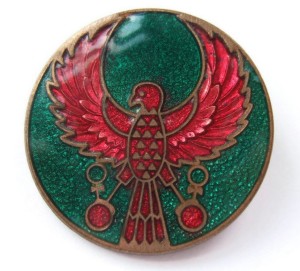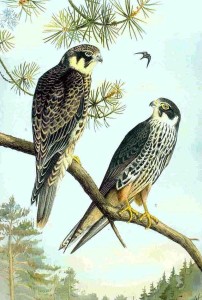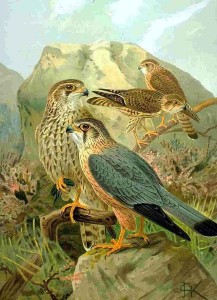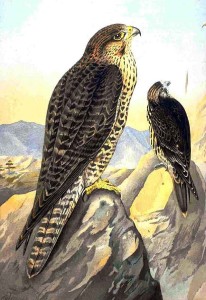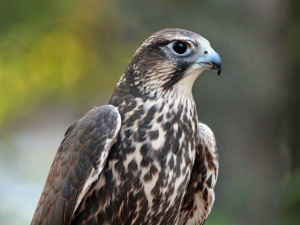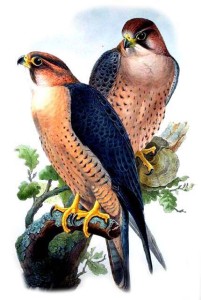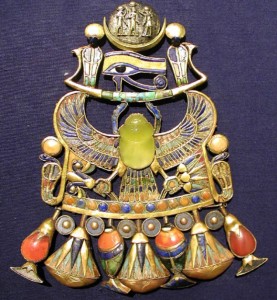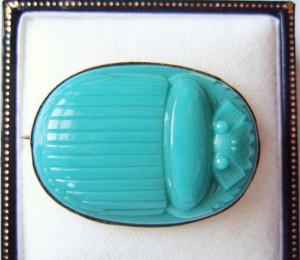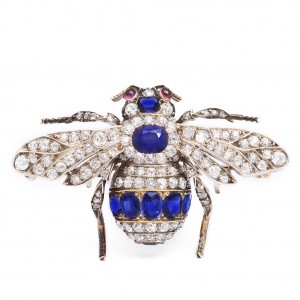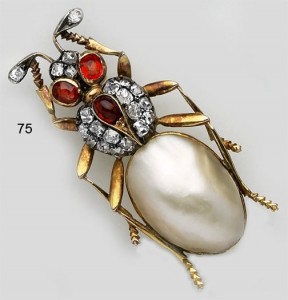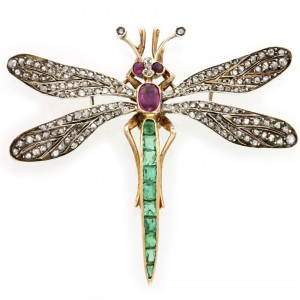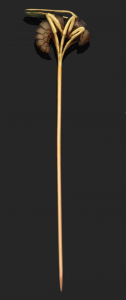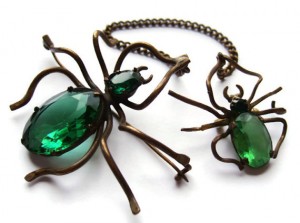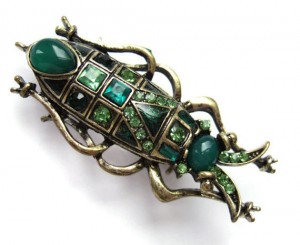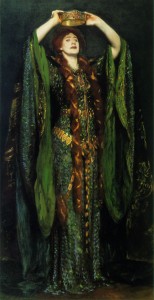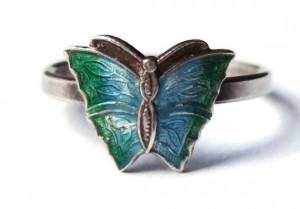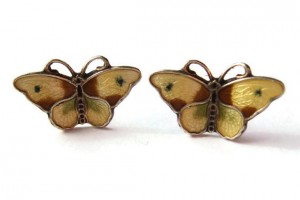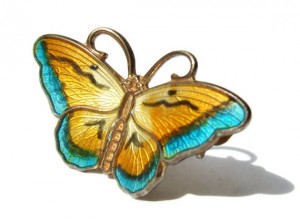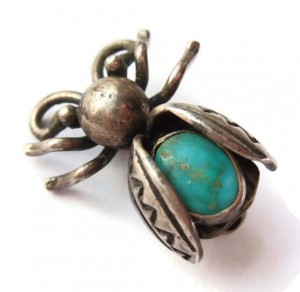This little cloisonné enamel brooch caught my eye: the colours are beautiful, as is the design. At first I wondered if it might be an imperial eagle of some sort (not the Russian one, as that has two heads), but perhaps a generalised version, as it appeared to be holding a royal orb in either clawed foot.
I love the beautiful way the wing feathers are depicted, and the triangles to represent the bird’s speckled breast. Taking a closer squint I noticed the ‘breeches’ on the bird of prey, and realised it is a hawk or falcon of some sort. And then it clicked: the ancient Egyptian god Horus was depicted as a falcon. Talk about the proverbial lightbulb switching on …
So off I head to do a bit of poking about on the web, and come up with this wonderful object:
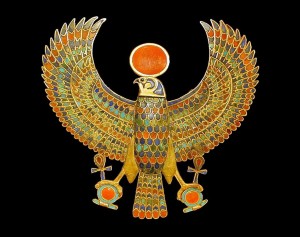
One of the treasures of King Tutankhamun’s tomb: Horus / Ra-Horakhty jewel. Photo by Jean-Pierre Dalbéra (check out his flickr stream: it’s amazing!)
My little brooch is based on this design, or something very similar to it. The beauty above was excavated in 1922 from the Tomb of Tutankhamum, apparently, though I have struggled to find out much more information than that. I assume it is with all the other King Tut treasures in the Egyptian Museum in Cairo, and was hoping to search their collections database online, but sadly the website for the museum is under construction at the moment. I have the 1972 guidebook to the British Museum Treasures of Tutankhamun exhibition, and it is not shown in that, so maybe it didn’t come over here for the exhibition.
(A small aside: I visited the exhibition with my family when I was nine. We queued outside the Museum for hours and hours, but luckily the summer weather was sunny and there were plenty of ice cream vans nearby. I was so excited to see the famous mask that I scurried through the rest of the exhibition, only to be dismayed when I had looked at the mask—the final artefact in the display—and then tried to go back to see the rest of the exhibits (and find my family) that the guard refused to let me back as the exhibition had a ‘one way’ policy to avoid clog ups. I was gutted and so annoyed at myself and my impetuosity. One day I will make it to Cairo to have a proper, long look at everything.)
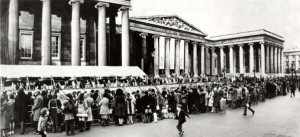
Queues at the British Museum to see the Treasures of Tutankhamun exhibition, 1972.
Horus was the Ancient Egyptian god of the sun, war and protection, and was usually portrayed as a falcon or as a man with a falcon’s head; by later Dynastic times he had merged with another sun god, Ra, whose symbol was a sun disc, to form Ra-Horakhty. The sun disc above the falcon’s head suggests this is thus a depiction of Ra-Horakhty. The round objects that Ra-Horakhty is holding in the Tutankhamun object are shen rings, which signify eternal protection, and above them are ankhs, which represent eternal life.
The Horus / Ra-Horakhty falcon on my brooch is missing the sun disc above its head, and the configuration of the ankhs and the shen rings have become a little confused so they look more like royal orbs, but this may well be due to the western artist’s lack of familiarity with the symbols and iconography of Ancient Egypt.
I wonder which member of the falcon family (Falconidae) is depicted on the Tutankhamun specimen. The speckled breast and eye markings are very distinctive, similar to those found on some hobbys, merlins and falcons. I’m sure someone has done research into to species of animals portrayed in Ancient Egyptian art. There’s quite a list of possibles from which to choose, although many of the species listed just winter in Egypt and breed elsewhere, rather than being year-round residents.
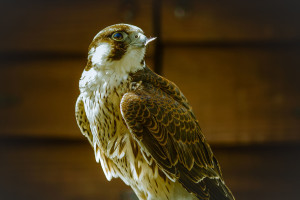
Barbary falcon (Falco peregrinus subsp. pelegrinoides), a subspecies of Peregrine falcon. Photo by Jason Halsall.
I wonder if the Barbary falcon (Falco peregrinus subsp. pelegrinoides) is the most obvious candidate, as it is a subspecies of the Peregrine falcon, the fastest animal on earth, and one which has been admired for thousands of years for its speed, grace and hunting prowess.
